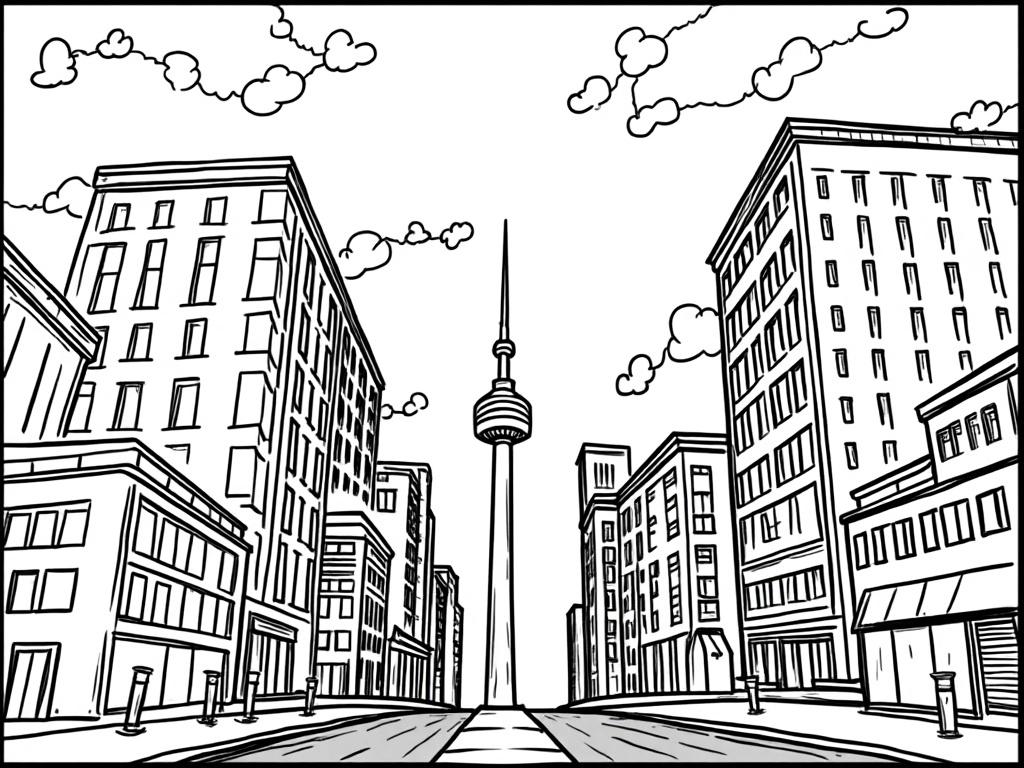
Risks in Real Estate Investing: Vacancies, Illiquidity, and Market Cycles
Reading time: 12 minutes
Ever watched a property sit empty for months while your mortgage payments continue? You’re experiencing one of real estate’s harsh realities. Let’s dive into the three biggest risks that can make or break your investment journey.
Key Risk Insights:
- Understanding vacancy patterns and mitigation strategies
- Managing liquidity constraints in property investments
- Navigating market cycles for optimal timing
Well, here’s the straight talk: Successful real estate investing isn’t about avoiding all risks—it’s about understanding and managing them strategically.
Table of Contents
- The Vacancy Challenge: When Properties Stand Empty
- The Illiquidity Trap: When You Can’t Exit
- Market Cycles: Riding the Waves of Change
- Risk Assessment Framework
- Practical Risk Mitigation Strategies
- Your Investment Risk Roadmap
- Frequently Asked Questions
The Vacancy Challenge: When Properties Stand Empty
Imagine Sarah, a first-time investor who bought a rental duplex in Austin. After her tenant moved out, the property sat vacant for four months, costing her $8,400 in lost rent plus carrying costs. This scenario plays out thousands of times across the country.
Understanding Vacancy Rates
Vacancy risk represents the potential for rental income loss when properties remain unoccupied. According to the National Apartment Association, the average vacancy rate across U.S. markets hovers around 5-7%, but this varies dramatically by location and property type.
Factors Influencing Vacancy Risk:
- Location desirability: Properties in high-demand areas typically experience shorter vacancy periods
- Property condition: Well-maintained properties attract tenants faster
- Market saturation: Oversupplied markets increase competition among landlords
- Economic conditions: Job growth and population trends directly impact rental demand
The Real Cost of Vacancies
Vacancy costs extend beyond lost rent. Consider these hidden expenses:
- Continued mortgage, insurance, and tax payments
- Marketing and showing costs
- Potential property damage from neglect
- Screening and leasing fees for new tenants
Pro Tip: Calculate your monthly carrying costs before investing. A $2,000 monthly mortgage becomes a significant burden during extended vacancies.
The Illiquidity Trap: When You Can’t Exit
Unlike stocks that can be sold within minutes, real estate transactions typically take 30-60 days under ideal conditions. During market downturns, this timeline can stretch indefinitely.
Understanding Liquidity Constraints
Real estate illiquidity manifests in several ways:
Time-to-Sale Factors:
- Property preparation and staging
- Marketing and showing periods
- Negotiation and due diligence phases
- Financing and closing processes
Consider Mark’s experience during the 2008 financial crisis. His commercial property, purchased for $1.2 million in 2007, remained on the market for 18 months before selling at a 40% loss. The illiquidity prevented him from pivoting to other opportunities.
Market Liquidity Variations
Different property types exhibit varying liquidity levels:
| Property Type | Average Days on Market | Liquidity Level | Market Sensitivity |
|---|---|---|---|
| Single-Family Homes | 25-45 days | High | Moderate |
| Small Multifamily | 45-90 days | Moderate | High |
| Commercial Properties | 90-180 days | Low | Very High |
| Raw Land | 180+ days | Very Low | Extreme |
| REITs (for comparison) | Instant | Very High | Moderate |
Market Cycles: Riding the Waves of Change
Real estate markets follow predictable cycles, typically lasting 7-10 years. Understanding these patterns helps investors time their entry and exit strategies effectively.
The Four Phases of Market Cycles
1. Recovery Phase: Following market bottoms, smart money begins purchasing distressed properties. Vacancy rates remain high, but prices stabilize.
2. Expansion Phase: Economic growth drives demand. New construction increases, vacancy rates decline, and rents rise.
3. Hyper-Supply Phase: Overconfidence leads to excessive construction. Supply begins outpacing demand, though prices continue rising.
4. Recession Phase: Market correction occurs. Vacancy rates spike, rents decline, and distressed sales increase.
Market Cycle Indicators Visualization
Key Market Health Indicators:
Risk Assessment Framework
Quick Scenario: You’re considering three properties—a downtown condo, suburban single-family home, and rural commercial building. How do you evaluate their risk profiles?
Risk Evaluation Matrix
Different investment strategies carry varying risk profiles. Here’s how major risks stack up across property types:
Risk Level Scale: 1 (Low Risk) to 5 (High Risk)
- Urban Residential: Vacancy Risk (2), Liquidity Risk (2), Market Cycle Risk (3)
- Suburban Residential: Vacancy Risk (3), Liquidity Risk (2), Market Cycle Risk (2)
- Commercial Properties: Vacancy Risk (4), Liquidity Risk (4), Market Cycle Risk (4)
- Rural Properties: Vacancy Risk (5), Liquidity Risk (5), Market Cycle Risk (3)
Practical Risk Mitigation Strategies
Vacancy Risk Management
Proactive Tenant Retention:
- Implement annual property improvements
- Maintain competitive rental rates
- Respond quickly to maintenance requests
- Build relationships with quality tenants
Strategic Property Selection:
- Target areas with job growth and population increases
- Choose properties near transportation hubs
- Avoid oversaturated rental markets
- Consider demographic trends affecting housing demand
Liquidity Enhancement Techniques
Diversification Strategy: Don’t put all capital into illiquid real estate. Maintain 20-30% of your investment portfolio in liquid assets for opportunities and emergencies.
Exit Planning:
- Identify multiple exit strategies before purchasing
- Maintain properties in marketable condition
- Build relationships with local real estate professionals
- Consider seller financing options to attract buyers
Market Cycle Navigation
According to real estate economist Dr. Glenn Mueller, “Successful investors buy during recovery phases and sell during hyper-supply phases.” This contrarian approach requires patience and market awareness.
Cycle-Based Strategies:
- Recovery Phase: Focus on distressed property acquisition
- Expansion Phase: Hold and optimize existing properties
- Hyper-Supply Phase: Begin considering exit strategies
- Recession Phase: Preserve capital and prepare for next cycle
Your Investment Risk Roadmap
Ready to transform risk awareness into strategic advantage? Here’s your practical implementation roadmap:
Immediate Actions (Next 30 Days):
- Conduct Risk Audit: Evaluate your current properties using the framework above
- Build Cash Reserves: Establish 6-month expense reserves for each property
- Market Research: Analyze local market cycle indicators and vacancy trends
Medium-Term Strategies (3-6 Months):
- Diversification Review: Assess geographic and property type concentration
- Professional Network: Build relationships with property managers, real estate agents, and contractors
- Exit Strategy Planning: Document clear exit criteria and processes for each investment
Long-Term Risk Management (Ongoing):
- Market Monitoring: Track key economic indicators quarterly
- Portfolio Rebalancing: Adjust property mix based on market cycles
- Continuous Education: Stay informed about local and national real estate trends
Remember: The most successful real estate investors aren’t those who avoid all risks—they’re the ones who understand, prepare for, and strategically manage them. As markets continue evolving with remote work trends and demographic shifts, your ability to adapt risk management strategies will determine long-term success.
What’s your biggest concern about real estate investing risks, and which strategy will you implement first to address it?
Frequently Asked Questions
What’s considered an acceptable vacancy rate for rental properties?
Generally, vacancy rates between 5-10% are considered normal, depending on your market. Factor this into your financial projections—if you’re budgeting for 100% occupancy, you’re setting yourself up for disappointment. Strong markets might see 3-5% vacancy rates, while transitional areas could experience 10-15%. Always research local market averages before investing.
How much liquid capital should I maintain alongside real estate investments?
Maintain at least 6 months of carrying costs per property in liquid reserves, plus an additional 10-20% of your total real estate investment value in accessible funds. This covers unexpected vacancies, major repairs, and potential opportunities. Many successful investors keep 25-30% of their total investment portfolio in liquid assets to maintain flexibility.
How can I tell where we are in the current market cycle?
Monitor key indicators like employment growth, construction permits, absorption rates, and rent growth trends in your target markets. Rising construction with slowing absorption often signals late expansion phase. Combine local data with national economic indicators—interest rates, GDP growth, and demographic trends. Most real estate markets don’t move in perfect synchronization, so focus on your specific geographic areas rather than national headlines.

Article reviewed by Georgi Ivanov, Corporate Lease Negotiator | Industrial Real Estate Strategist, on July 7, 2025
